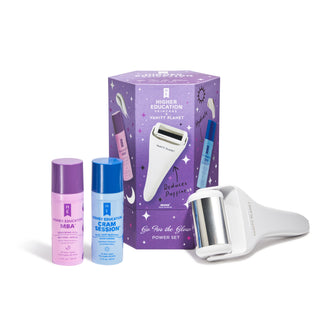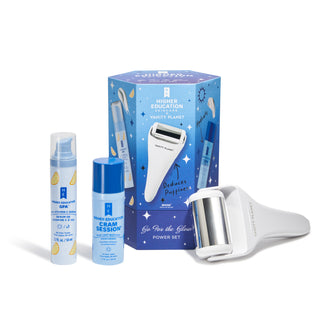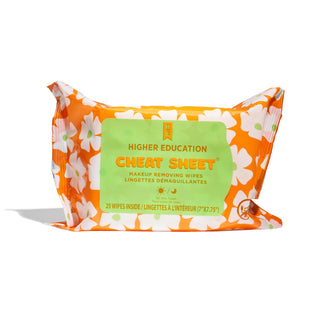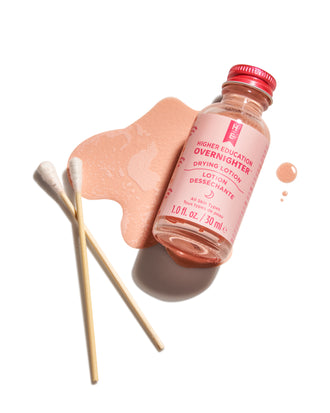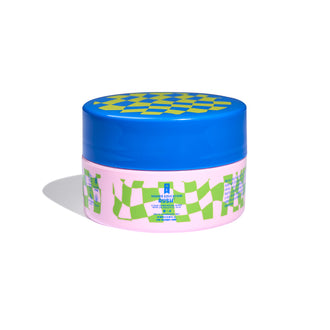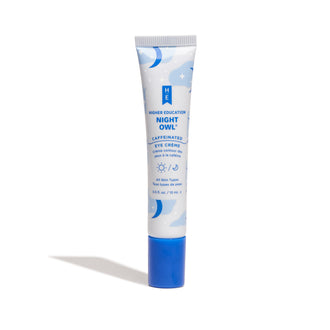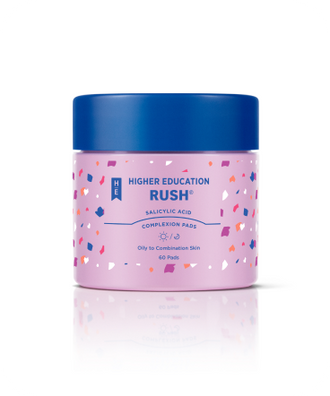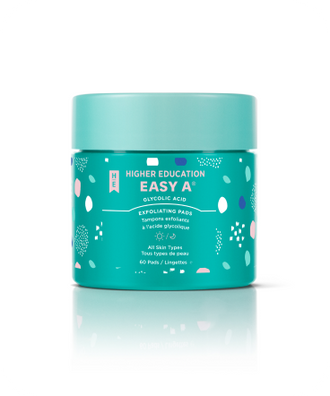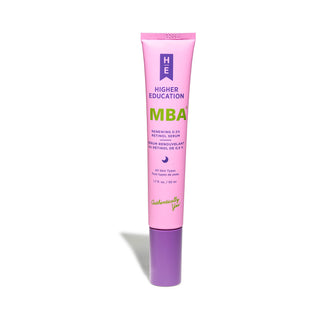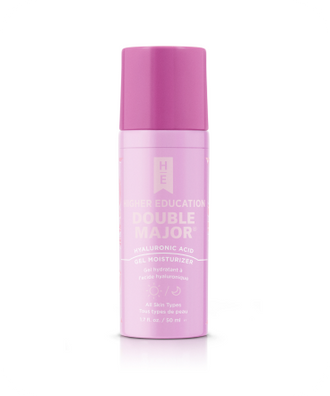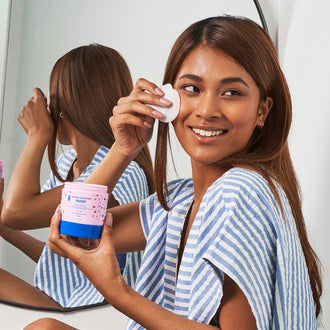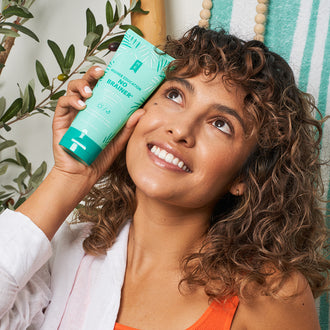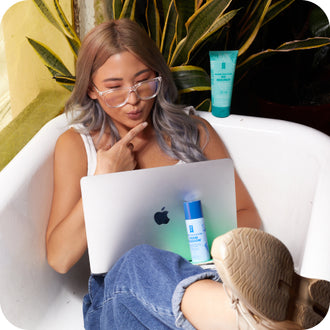
Acne is the most common skin concern, affecting 40-50 million Americans.
Your college years are prime time for Mr. Acne to come in like a wrecking ball and wreak havoc on your skin. 85% of people between the ages of 12-24 suffer from acne, so it might make you feel better to know that you are not alone.
College brings a whole slew of new living conditions and lifestyle changes that can cause acne (think: dining hall pizza, weird or non-existent sleeping patterns, class overload). However, to truly pin down the culprit, you need to learn how to decode what each breakout means and how it was caused, i.e. deductive reasoning.
I’ve totally been there: you wake up on game day with a pesky breakout that completely clashes with your spirit outfit. Queue the morning meltdown.
Learning the different types of breakouts & how to treat them can help to prevent that pre-tailgate freak out. Who better to help us decode your breakouts than your fave derm & total lady boss, Dr. Susan W. Cox, M.D.? We asked Dr. Cox to help us decode what each breakout really means and what we can do to prevent similar breakouts in the future.
Before we dove in to the “why,” we needed to understand the “what,” so, Dr. Cox explained the 3 types of skin lesions: comedones, papules and pustules, and cysts and nodules.
The 3 Types of Skin Lesions
1. COMEDONES (BLACKHEADS/WHITEHEADS)
Blackheads & whiteheads all start with a clogged pore. Oil on the skin (also identified as sebum) causes skin cells to stick together, which causes the pores to clog.
If the clogged pore is open at the top and appears dark in the center, it is known as a blackhead. If the clogged pore appears closed, it will appear as a whitehead.
If your skin is prone to blackheads, it is critical that you use skincare that doesn’t clog your pores or “non-comedogenic” products. RUSH® Salicylic Acid Complexion Pads are a match made in heaven for oily/acne prone skin. These pads help to control oil, remove blackheads, clear breakouts, and minimize the appearance of pore size.
2. PAPULES AND PUSTULES
These lesions appear around puberty, when a bacterium known as p. Acnes colonizes the skin. P. Acnes grows within the clogged pore and leads to inflammation that causes a red bump or what we refer to as a “pimple.”
This type of acne can be classified in two ways: papules or pustules. Papules are small, red bumps on the skin with rough texture. Papules tend to be hard to the touch and mostly appear on the face but can appear on the body as well.
If pus is evident within the pimple, this is a pustule, or more commonly known as a “pimple” or a “zit.” These pimples tend to be more noticeable due to the white/yellow dot on the surface; this specific type of acne can be larger and more painful.
3. CYSTS AND NODULES
The most painful and severe forms of acne are nodules & cysts. These acne forms can be large and extremely painful, lasting a long time on the skin.
Nodules are hard acne lesions that brew up underneath the skin. When the inflammation of the blemish becomes larger and deeper, or the pimple ruptures into the surrounding tissue, a painful red nodule will result. These can take weeks to resolve.
Cysts appear when comedones (whiteheads or blackheads) spill out onto the surrounding areas of the skin while your immune system fights back and creates pus. Cysts tend to be softer than nodules and mostly live on the lower part of the face and can appear as a result of hormonal fluctuations.
Why is This Happening to Me?
To investigate how one can prevent the different kinds of acne, I needed to understand what the most common causes of acne are. Dr. Cox explained to me that there are 5 major causes:
- Hormones
- Heredity
- Dirt, Sweat, Pollutants, or Oil Buildup
- Makeup Products or Comedogenic Ingredients
- Diet
Dr. Cox told me that the main triggers of acne are hormones and heredity; acne is usually noticed at the onset of puberty, when hormone stimulation increases sebum (remember, AKA “oil”!) production and p. Acnes colonizes the skin.
Heredity also plays a significant part in causing acne; if your parents struggled with acne in their teens or early adulthood, there is a good chance you will inherit this problem as well. Thanks mom! Thanks dad!
As we move through our day, dirt, sweat, pollutants and oil buildup will sit on the surface of our skin and can aggravate existing acne or clog pores to create acne. Plus, the addition of pore-clogging makeup products (like products that contain oil or fatty acids) will cause acne or increase your chances of developing acne. Make sure to check the ingredient labels on your makeup products; a good resource for verifying the ingredients on your skincare and makeup products are SkinCarisma and CosDNA. All you have to do is find the product in question online, locate the ingredient list, copy and paste the ingredient list into the ingredient search and you have a full list of the product’s ingredients and an analysis of the following:
- If is the product is paraben-free, sulfate-free, alcohol-free, silicone-free, EU allergen-free, and fungal acne safe
- How many ingredients are “anti-aging”
- How many ingredients are “brightening”
- How many ingredients are related to the different skin types (dry skin, oily/acne-prone skin, sensitive skin)
- The EWG safety rating (the percentage of low risk, moderate risk, high risk and unknown ingredients)
See the following image with an analysis of our DOUBLE MAJOR® Hyaluronic Acid Gel Moisturizer with Hyaluronix®, sea kelp and ginger.

Overall, diet is not much of a factor in causing acne, but recent research shows that refined, simple carbohydrates such as sugar and white flour products may worsen acne. Sugar and white flour are notorious triggers of inflammation in the body; dairy products may also be a problem for some people who are prone to acne.
Developing daily skincare habits and building a tried-and-true regimen are extremely crucial to clear your skin. It’s never too late to start, but I always recommend that you start NOW.
Lastly, stress is a common culprit for breakouts and college sure is a time for massive waves of stress. From midterms and finals week to balancing your social and academic schedule, there is a lot to feel stressed about.
So, What Can I Do About It?
Dr. Cox shared 3 tips with me that are surefire ways to help combat breakouts:
1. Wash Your Face
It’s important to wash your face in the AM and PM as well as after any activities or workouts. HIGHER EDUCATION PRE-REQ® Purifying Facial Cleanser is a heavenly cleanser for Oily/Acne prone skin that features 5% Glycolic Acid and Tea Tree Oil. And remember, ALWAYS take off your makeup before going to bed, even after a long night out.
2. Eat a Balanced Diet
A diet that includes complex carbohydrates but is low in sugars is perfect. If you believe that dairy may be aggravating your acne, try the elimination method and remove it from your diet for 2-3 months and see if you have any notable results.
3. Use Oil-Free & Non-Comedogenic Products
Start using products that are oil-free & non-comedogenic to avoid clogged pores.
If you take one thing from this blog, remember that it all starts with a clogged pore and bacterial growth. Keeping your pores clear and clean is essential to putting up a good fight against acne.
At Higher Education Skincare, we have stellar acne-fighting products that Dr. Cox recommends to her college-aged patients who are currently experiencing acne. Many of our products like HIGHER EDUCATION PRE-REQ® Purifying Facial Cleanser and RUSH® Salicylic Acid Complexion Pads contain ingredients like Tea Tree Oil and 2% Salicylic Acid that are specifically developed to help your skin combat the insanely stressful and hormonally-driven environment caused by our beloved college experience.
You are not alone! Remember that first stat I listed? 85% of people between the ages of 12-24 experience acne and with it comes the “acne blues.” Developing proper skincare habits now means you will be light years ahead of the class.


